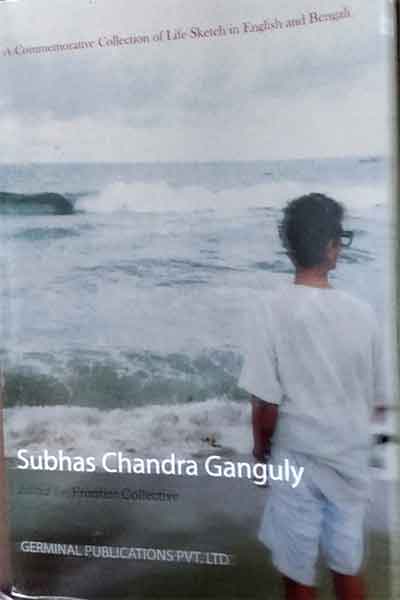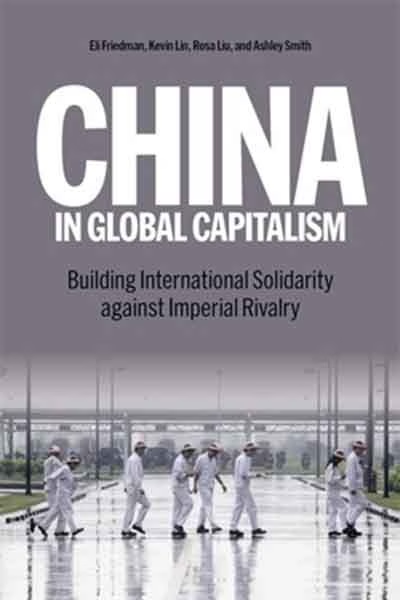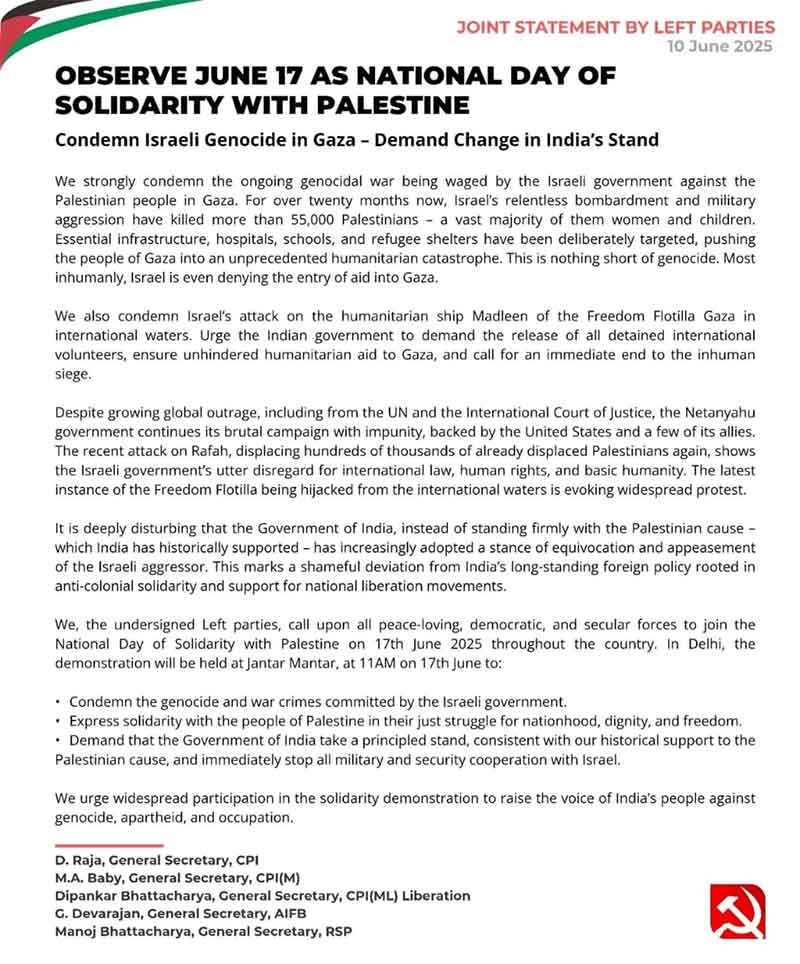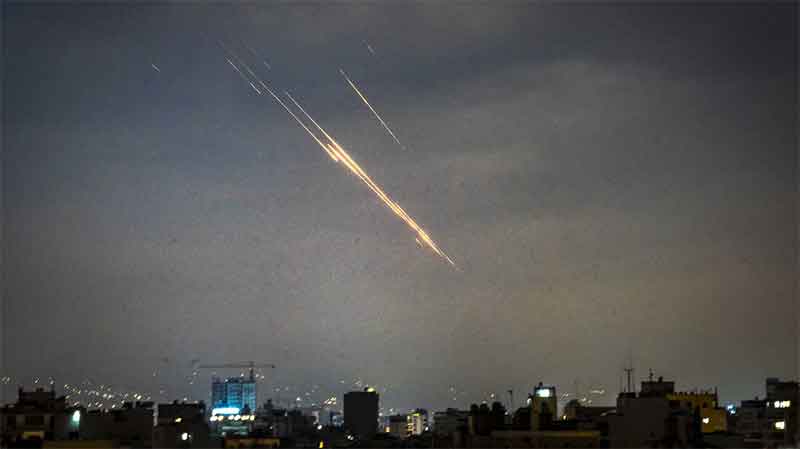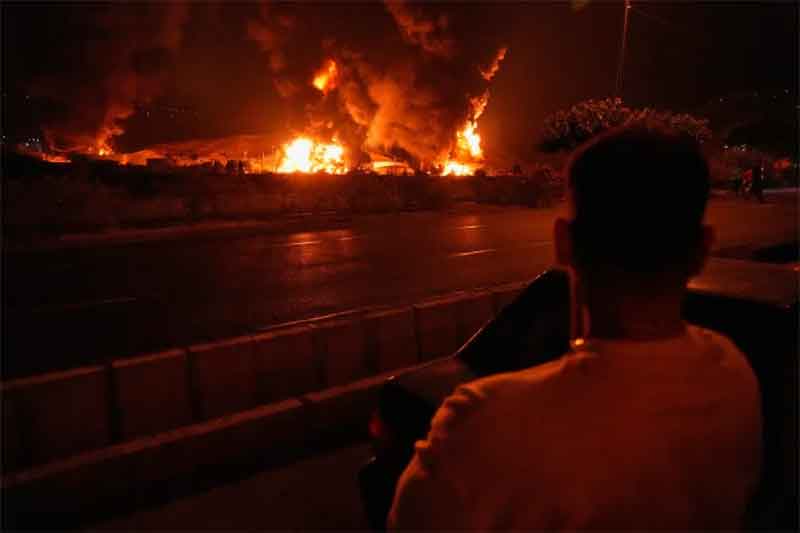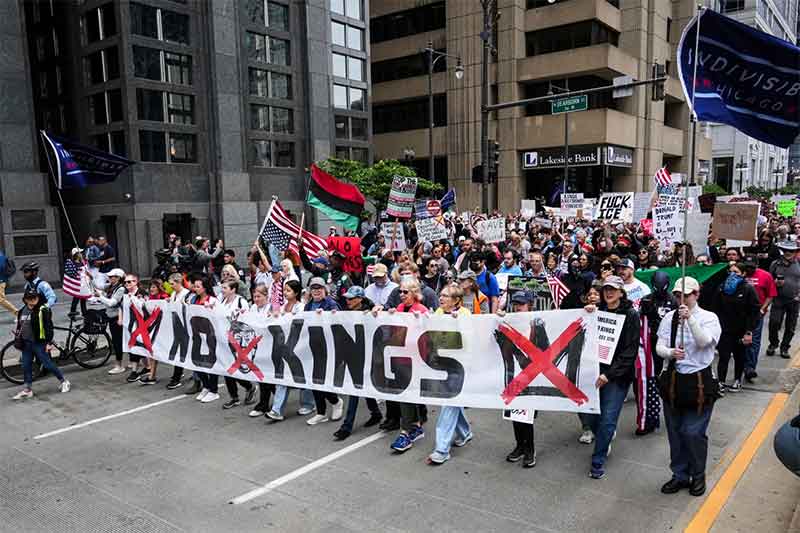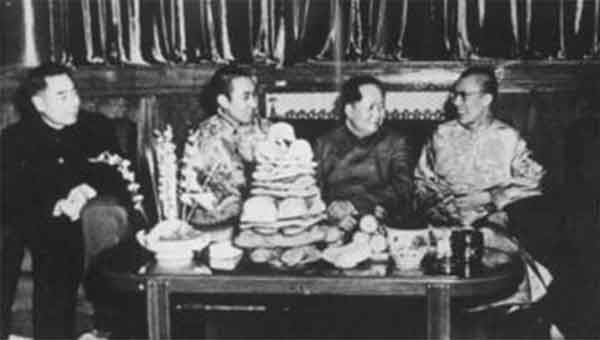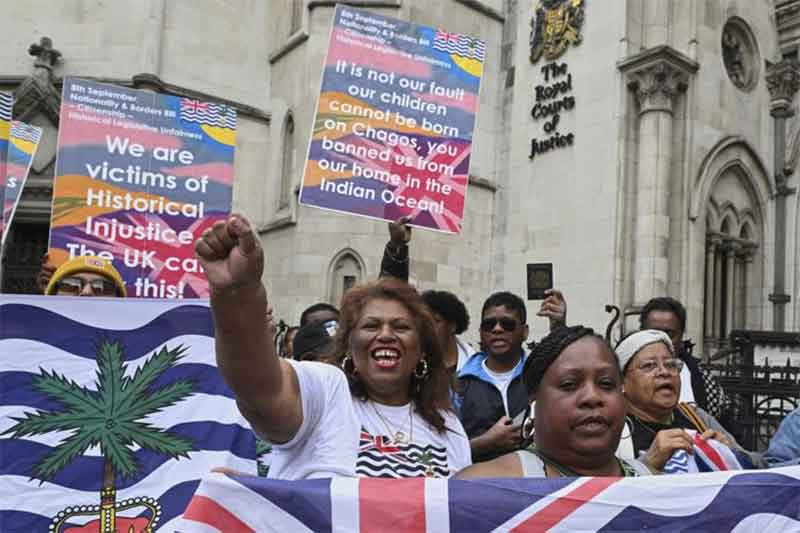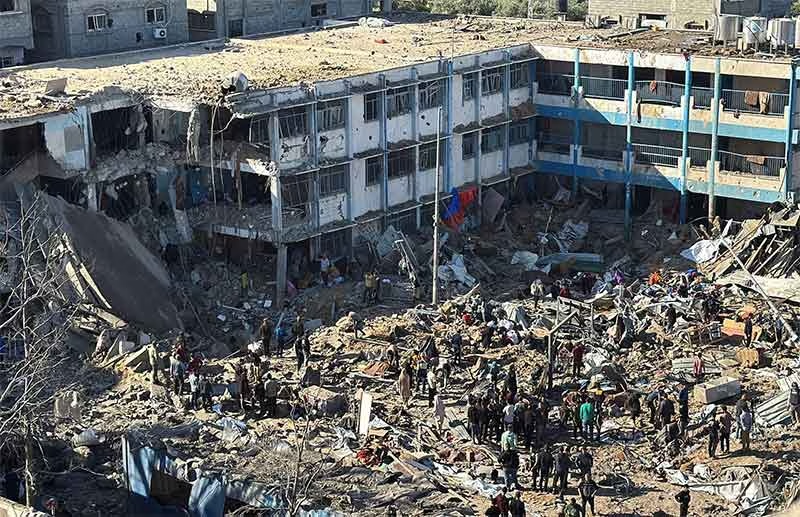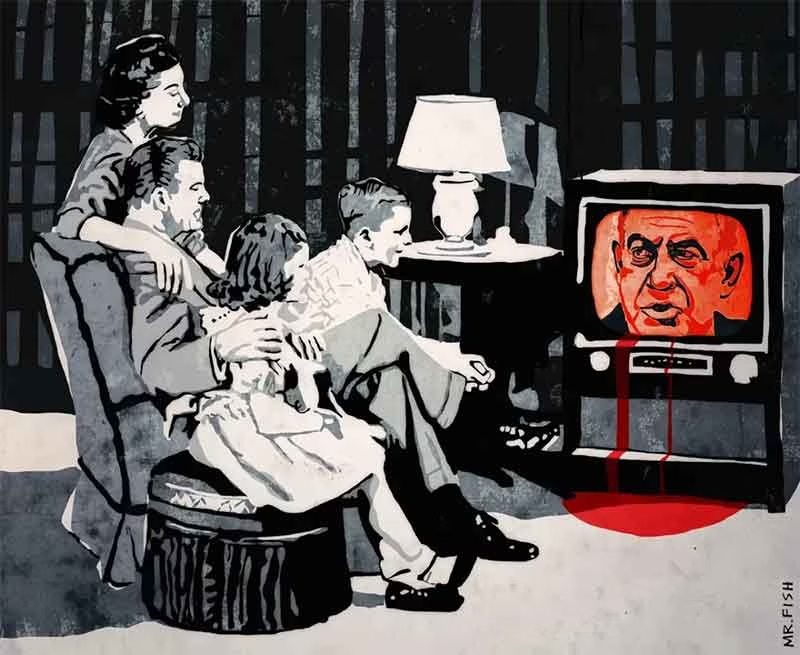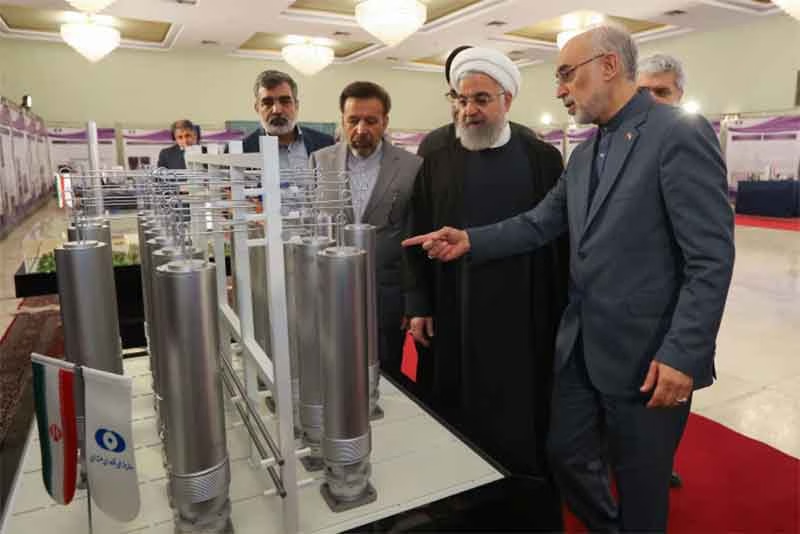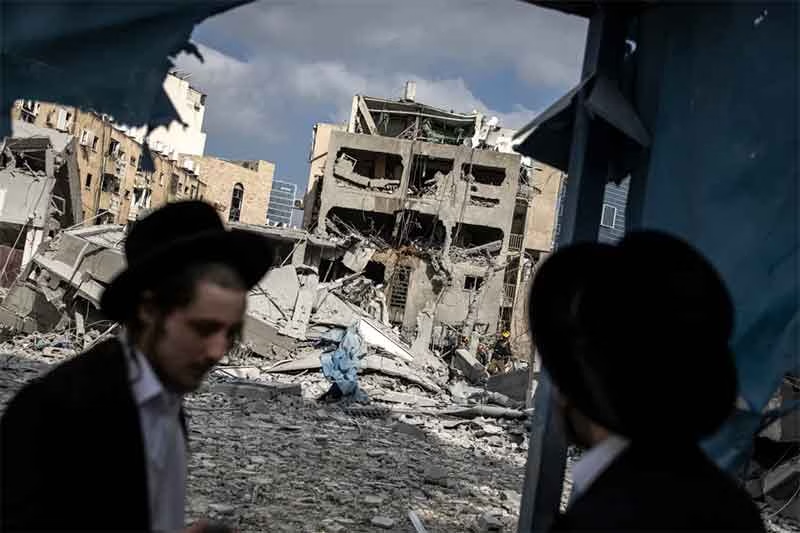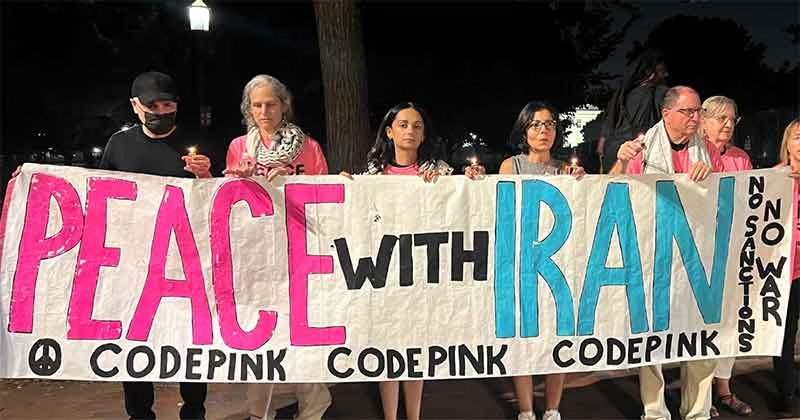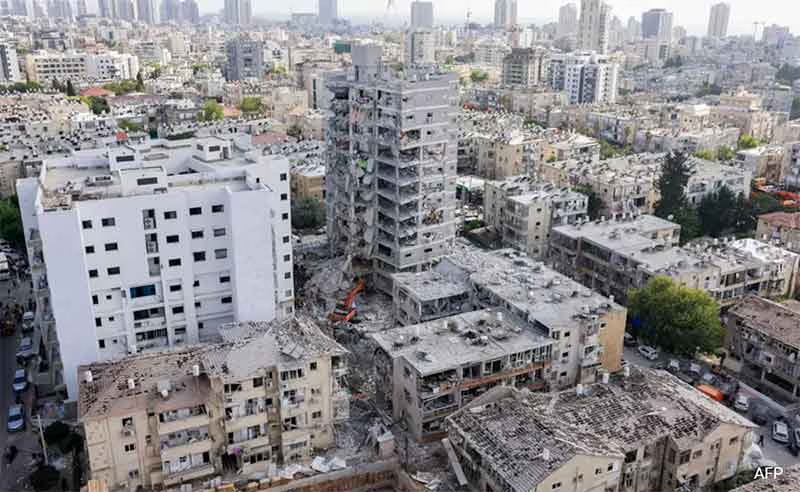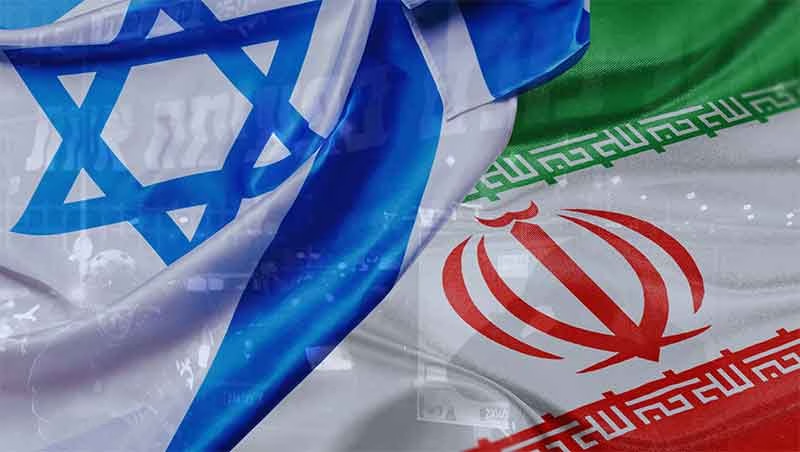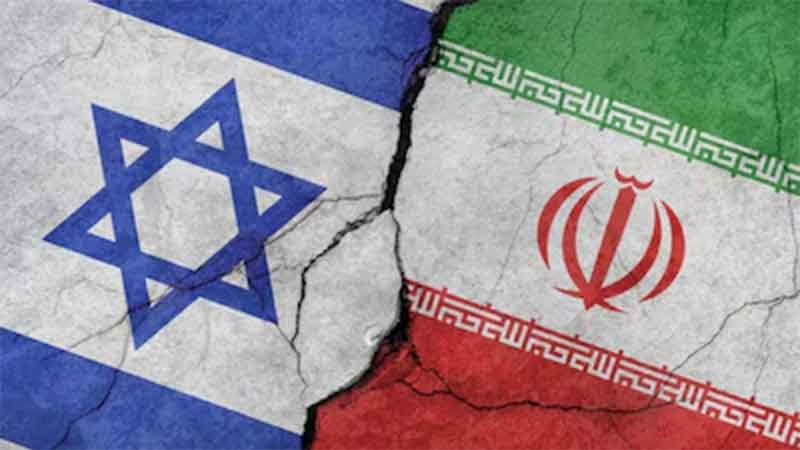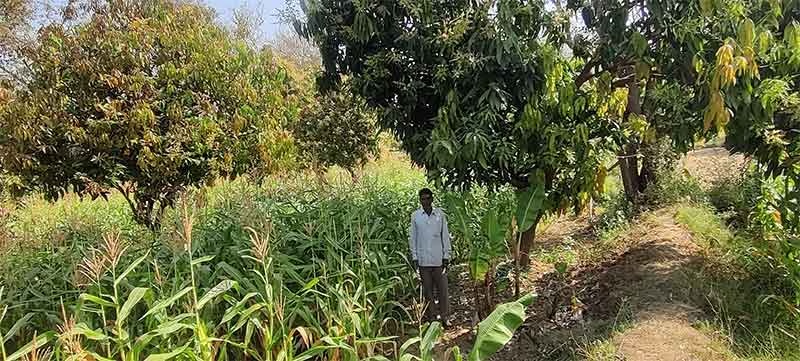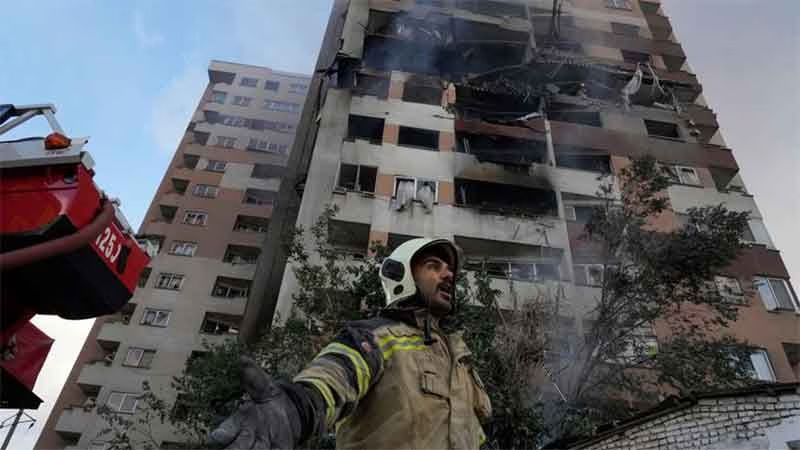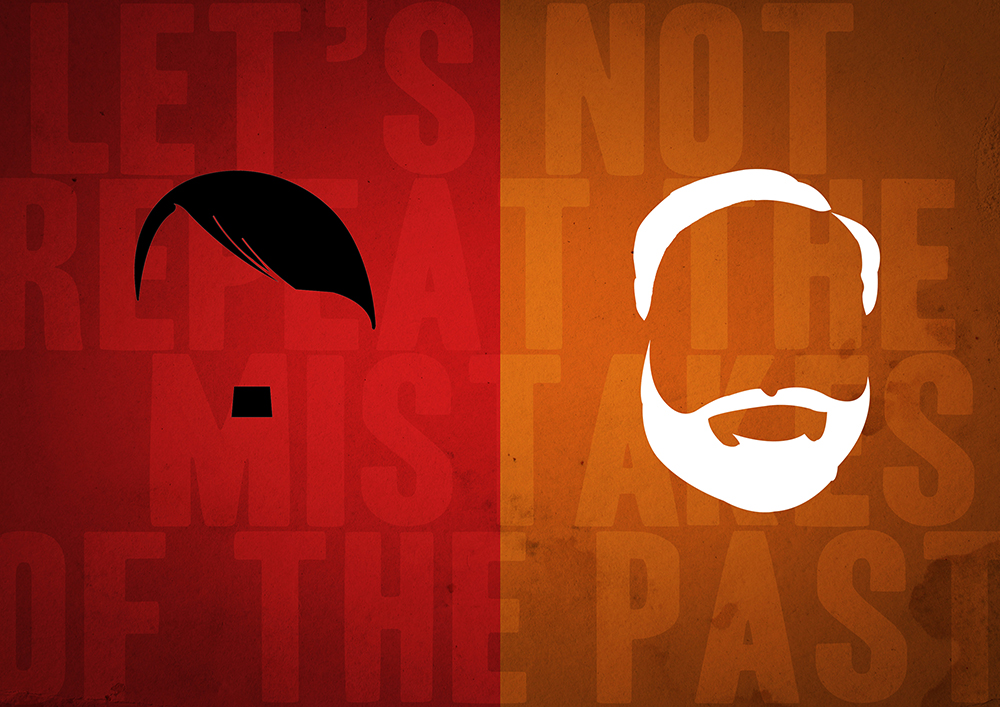How Not To Write History: A Review of The Quest for Modern Assam ( A History 1942 -2000) by Arupjyoti Saikia (Penguin Random House,2023)
Unlike postmodern sceptics who would like to class history as fiction,professional historians believe that historical narratives throw some kind of light on what had actually occurred in a given period of the past,and how.The ‘why’ of it is never ignored though there may be much less confidence in such pronouncements.
Hence when a book comes along with apparently massive painstaking documentation and bearing evidence of strenuous industry,and covering 800 and odd pages in small print,and all that in limpid readable prose,one might as well think that the mind-boggling riddle that is Assam will finally be unraveled.Assam( and states like Manipur) bursts into headlines with gory details of upsurge,turmoil,shootings,bombi–ngs,murder and mayhem intermittently.And metropolitan media scramble to rig up a passable story of what was happening with passable but often misleading clues.Then after some time the noise dies down and the stirring events fade into oblivion.All that remains are vague traces of such terms as ‘self-determination’,’identity’, ‘nationality’, ‘NRC’, ‘Detention centres’, ‘human rights’, ‘chauvinism’ and so on.Until next time.So if a voluminous work arrives to throw clear light on the confusing immensity of the shadowy events it would be a welcome relief from bewilderment.
That apparently is what is on offer in this book.The blurb on the inside fold of the cover affirms, “It offers an authoritative account that sets new standards in the writing of regional history”.The front cover cites the weighty opinions of two distinguished historians Partha Chatterjee and Ramachandra Guha showering Unstinting praise for the work.
But it can be seen by discerning readers with adequate knowledge and grasp of Assam’s past that such claims are questionable,if not misleading. The immense book skips over phases of history,ignores some important accessible sources and fails signally to explain some foggy episodes with reasonable clarity.The lithe grace of the narration,the apparent lucidity come from unawareness or evasion of challenging facts on the ground. It will be tiresome if not pointless to go over all the lapses in detail and we shall be content with a few broad scans over the area of study.

First the arbitrary beginning of the narrative.It starts with 1942,the year when the British Empire faced its greatest and most critical challenge both internally and externally.The lightning-fast and ruthless Japanese offensive reaching the very outer perimeter of the empire in record time turned Assam into a major front of the WWIi to the utter confusion of the bucolic Assamese.But the Indian National Congress leaders also chose this moment to launch a massive uprising against the empire provoking ferocious reprisal from the cornered dragon.Saikia also stresses a fact that is often ignored or soft-pedalled by scholars in accounts of Bengal Famine of 1943: the loss of Burma(Myanmar today),the rice bowl of the empire.
Thus both economically and politically the British had suffered a major blow.But that by no means justifies choice of this date as the starting point of his narrative.If the author had connected that to some critical feature in the development of ‘modern Assam’ or the modern Assamese,it would have made some sense.But he has just held it up as a backdrop of his proposed saga.
What he has dismally failed to do is to trace a basic weakness of the economy of modern Assam and of Assamese society at large to this faltering economy of the empire.The so-called quest for modern Assam is actually the enterprise of the Assamese middle-class to build itself as a modern nationality in conditions constrained by colonial rule. Saikia appears singularly unaware of or oblivious of the besetting weaknesses of the Assamese middle-class, explaining many a later crisis that blew in its face,whether fierce tribal upsurge,economic hardship stemming from underdevelopment or internal political turbulence like unprecedented communal violence in the name of identity or the blood-spattered years of the ULFA in its ascendancy.
Saikia dwells long on the recent years of turmoil with clinical detachment,not looking away from the vicious violence and barren disorder.But probably he treats them as signs of growing pains or hurdles to ‘the quest’ of his title.The tumult and the violence perhaps seem in retrospect to him as hurdles overcome,and not as tragic consequences of inherent weaknesses never squarely faced.The Assam Movement is marked by several photographs in the book unlike Quit India movement and the freedom struggle as a whole.Thus what we have before us is a Michelin-like guided tour for tourists rather than an illuminating history.
So the ambiguity in the title(whose quest?what kind of quest? are questions occurring naturally) turns out to be either an unconscious or concealed bias towards the Assamese middle-class and consequent evasion of its grave weaknesses and historic failures. A brief glance at the acknowledgments exposes the lineage of such regrettable lapses from objectivity that is required of a true historian.
To explain,let us dwell on one among many telling omissions in this bland account.When the proposal for founding a university in Assam came up in the Assam provincial legislature, in view of Calcutta University’s perceived neglect of Assam’s concern, both the Assamese(both Congress and Muslim League) and the tribal members hailed it with enthusiasm.Tribal leaders like Rev.Nichols Roy expressed the hope that the university would help explore and nurture tribal cultures and languages.The bill was passed.
But when a university did come up in Guwahati very little initiative was seen among university authorities to heed tribal concerns and aspirations. To some extent it was certainly a matter of lack of finance.(Down to nineteen sixties the state budget allotted annually only 16 to 20 lakh rupees as grant to the university.Even if we allow for soaring inflation since those days,it is still a meagre sum for running and developing a university.)
But there is no evidence that the university lobbied with the government or tribal leaders to raise the amount to make room for tribal research and studies.
What emerged with disturbing haughtiness and smugness was singular scorn for tribal aspirations and the facile expectation that all such tribes will one day merge with the Assamese and thus inherit the fruits of development. I had occasions in late fifties of last century to explore the rabbits’ warrens of government offices of Shillong,then the capital of undivided Assam.
I was too young and callow then to question the assumptions of Assamwse nationalism,but I had noticed the strangeness of not finding even the odd local Khasi clerk or peon among hundreds of employees.The Khasi presence was visible only in a number of Khasi women with steaming kettles selling tea and biscuits.I also felt the injustice of naming various sites of the capital after the ministers of the government and the utter disdain for Khasi sentiments .The attitude was purely that of settler colonialism.
With such a baggage of gifts the Assamese leaders had been trying to convince the various tribes of the great benefits of Assamese hegemony.The customary explanation for tribal discontent was ‘foreign incitement’.:. Saikia regrettably shows no awareness of such blindness and folly.The ‘quest’ for modern Assam thus turns out to be a simple straightforward story of an oppressed people trying to ascend to modernity out of obscurity,and more or less succeeding against heavy odds.An uplifting story,but vacuous.
That is not all.Even after seizing monopoly political power through the Official Language Act of 1960-61,to the chagrin and mortification of tribals who at that time constituted a sizable minority in the state,Assamese leaders used mass stirs to wrest their desired and claimed benefits from a politic centre who proved willing enough to accommodate for a pretty long time.The Assam Movement,the ULFA episode saw violence on a larger scale and with increasing intensity to secure such gains.The common masses were lured with illusory prospects of material gain and their patriotic feelings were channeled into acts of blind chauvinism.Saikia does not shirk the violence, but goes on to mention such acts in the tone of a police report,devoid of moral outrage.
The source of this ferocity is neither foreign or outside instigation though it could be a factor sometimes,nor desperation at centre’s apathy.It lies in the fact that the roots of this middle class in conditions of colonial dominance stirred high aspirations for unhindered national growth,but clogged its progress to such heights with insuperable obstacles.The economic circumstances of its origins were such as to rule out the acquisition and accumulation of capital through profitable business and industry.Unlike the neighboring Bengali middle-class the country ruined by devastating peasant revolts against an oppressive feudal state and with trade and commerce virtually extinct could hardly support a prosperous class of zemindars and traders.The Assamese middle-class were by and large government officers and employees along with a handful of traders who sought to find room in a flourishing colonial timber trade as collectors and suppliers of logs.There were also quite a few tea-planters also producing for the world-wide British monopoly.But neither their resources nor their grip on the trade(routed through auction centres) could risk any real competition with giant British firms.Following independence most of the larger plantations were acquired by Marwari,Sindhi and Punjabi companies and monopolists like the Tatas.Even the tax revenue acquired by the Assam state government remained a mere fraction of the huge acquisition of sales tax collected from bulk tea sales in Kolkata auction centres.Besides tea was not considered an industry under colonial rule given its umbilical ties to plantation enterprises..
This is not to say that that is all there is ¹to say about the story of Assam’s passage to modernity.But it has a lot to do with the lost trails,the serious confusions and distractions and the far from satisfactory arrival at the desired place.Faced with the crushing weight of neo-liberal economy as well as the unwelcome embrace of illiberal politics it is at the moment facing an existential crisis.But the genetic weaknesses mentioned in the foregoing discussion has a lot to do with it.
Assam still has a vibrant middle-class culture despite being in the backwaters.It has produced musicians like Bhupen Hazarika, internationally known film directors like Jahnu Baruah,and two novelists and a poet who have bagged the coveted Jnanpeeth award,who are among national icons.There is no dearth of talent but the environment cannot provide proper and steady nourishment for prosperous growth. Economically it is sliding downhill and despite the bombast of chief ministers is fifth from the bottom in rank in economic development.
Agriculture has stagnated and a sizable section of farmers have given up farming and are subsisting on government doles. Unemployment is soaring and the prospect of industrial development which once looked quite promising seems now dismal.Bureaucrats in Delhi and their plutocratic mates are conspiring to quietly smuggle whatever production facilities remain in the oil sector out of Assam.Whatever meets the eye as big infrastructure projects appear to be transit facilities for moving goods to and from future sources and markets in Southeast Asia.The locals are simply bewildered by such a trend especially since these are being touted as unfailing markers of ‘Vikash’.
It is thus very important to find a clue to these events that had their roots in part in the stranglehold of outside capital on the economy which since colonial times is quite indifferent whether Assam has balanced development,as well as in colonial shaping of the dominant middle class which seems incapable of an independent initiative for economic and industrial development. However we shall have another time to discuss such stagnation and regression.We may now proceed with the rest of the story left largely untouched by the author.
The semifeudal relations thar provided sustenance to the better-off sections of the middle-class kept being reproduced as more and more of them bought up land and put marginalized tribal and low-caste tenants to the grind of uneconomical farming.Now that agriculture no longer pays, both landowners and petty peasants on small patches of land are selling off land to Marwari and Gujarati traders and entrepreneurs.The state government in stead of stemming this tidal alienation of land has started leasing thousands of hectares of land to the likes of Baba Ram Dev for initiating more ‘Vikash’.The possible outcome of such trends is reduction of millions of locals to hopeless penury and unkilled subsistence jobs.Only the local commissioned agents and subsidiaries of outside capital and lower level managers from the middle-class might remain afloat.Such a destination for the quest or pilgrimage is surely ironical.
The role of the Left,especially the Communists does find a place in the narrative,but again as a bland report of events recounting Communist success in mobilizing tenant farmers and marginal farmers for demanding urgent land reform..The middle-class from the beginning hated and dreaded them as a major threat to their way of life and persecuted and harried them ruthlessly.The government led those assaults with ruthless legal and penal measures.For they organized the tenant farmers and made them conscious of their rights threatening the feudal structure of exploitation.Their untiring efforts and tough undaunted peasant resistance in the end led to a thaw and great improvement in the lot of the peasantry for some time.With a higher share of the harvest and some of their offspring getting absorbed in the various jobs of oil production and supply,there was a temporary phase of relative prosperity for them.That had been the contribution of a progressive section of Congress in state and central government. Headquarters of the oil exploring giant ONGC was located in the state which was expected to kickstart economic growth in some ways. The author shows significant land redistribution as well as the sabotage by political agents of the landed middle-class and crass officials of the well-meaning legislative measures of government.It is obvious that but for the Communists this kind of major reform would not have taken place,even though the intended revolution eluded them.
Now this is not merely a dramatic chapter of the account of modern Assam’s history.It amounts to a significant qualitative change of its social life.However,one is compelled to reiterate, tenancy has not disappeared as tribal and poor low caste farmers without access to easy credit and affordable implements under state patronage, became easy prey to rapacious money-lenders and landowning local thugs.Those who did climb out of tenancy and become independent enterprising farmers mostly failed to advance farther thanks to lackadaisical government interest in flood control and winter irrigation.Even now the proportion of irrigated land falls short of 20% of arable land.Further, as government procurement of crops at reasonable price and cold storage facilities are either missing or far short of the actual need,farmers are forced to part with the produce at undemunerative rates.
During the tenure of Sarat Chandra Sinha,a non-caste-Hindu Chief Minister in saddle for the first time,there was a serious and successful attempt at improving the lot of this rising section of farmers with effective land-reform,slashing the landowner’s due to one-fifth of the produce, providing machinery for a variety of agricultural activities through Assam Agro-industries Corporation etc.He was often ridiculed for his pains by middle-class circles.But the gains had been real.
But that advance got mired in corruption and bureaucratic muddle in the late seventies,and unemployed youths again began suffering from widespread frustration.Assam Agro-industries Corporation which had broken even and was showing profits fell prey to corruption and negligence as its management fell in the hands of people who lacked commitment.Besides circles in the government and a burgeoning contractor class developed a vested interest in construction of weak infrastructure such as embankments for flood-control and roads so that they had a perennial supply of ample government funds from contracts for repairing them.To be blunt their gain was at the loss of the farmers.
This was also the period of re-emergence of the Left in India and many a youth had found themselves drawn towards leftist organizations and parties.A section of Communists had broken away from the strategic line of supporting a ‘progressive government’ and formed a group committed to radical social change.The CPI(M) considered the parliamentary path as well worth exploring while a more radical section split into several revolutionary groups broadly known as ‘Naxalites’ after the Naxalbari armed peasant uprising in North Bengal.The latter got embroiled in bitter infighting calling one another renegades and reactionaries.The moderates by and large joined the CPI(M).
In Assam trends in neighbouring West Bengal set the trend of development.Those who worked in the countryside, organized the peasantry and led militant peasant struggle against exploitation, as well as among trade unions in public enterprises as well as LICI and banks fighting for their rights,could be identified as CPI(M) or CPI followers.The Naxalites on the other hand had no such steady bases in Assam,but were active among many small groups of youths and students bringing out furious cascades of revolutionary writings both theoretical and literary.The latter being theoretically inclined were often foxed by their attempts to find feudal zemindars in Assam which has a ryotwari system of land ownership.The zemindars of Goalpara and Cachar had been dispossessed of their estates.The petty bourgeois infatuation with violence sometimes led to awkward attempts at murder of individuals identified as zemindars, but while it annoyed the middle-class the latter were more disturbed by the organized grass-roots struggles led by CPI(M) peasant fronts.However Naxalite groups initiated critical theoretical work on caste and subaltern history.Both sections fostered progressive and revolutionary poetry and fiction of some quality.
In 1972 the author of this review was placed at the head of the editorial board of NATUN PRITHIVI,a progressive left-leaning magazine which aroused much interest with poetry and fiction advocating social change and published pioneering articles on social history like the rise of the Assamese middle-class,the impact of the tea industry,legacy of medieval Vaishnavism and relationship between artistic and economic productions,and lterary and revolutionary value.A challenge to its viewpoint was posed soon after by conservative circles in a voluminous periodical anthology called SANGLAP, edited by poet Bhaben Barua, which warned that catering to popular audiences might dilute quality and went on to plead for high culture.This episode is deliberately passed over by Saikia even though the debate had a major impact on cultural life of the state at that time.
Though not a direct product of this ferment the stir and the urge to widen horizons also saw the emergence and growth of modern painting with three painters all trained in Viswa Bharati under the iconic artist Ram Kinkar and exposed to various schools of modern painting——-Shobha Brahma,Neelpavan Barua and Benu Misra—- aroused widespread interest with their distinctive experiments in form and tone.Saikia claims to give a comprehensive account of the cultural aspect of Assam’s transition to modernity but unaccountably leaves out this important segment of culture.
The boiling point was reached when in 1978 elections to the state assembly following the Janata wave in the rest of the country an unprecedented 28 members from various leftist groups was elected and a government led by a veteran socialist leader took charge of state administration.
This set alarm bells ringing among the regional middle-class which was accustomed to using state government to feather their own nests.The ministry fell after a year in office.Out of nowhere a tremendous popular upsurge arose and soon seemed to sweep all before it.Along with traders of and government servants of non-Assamese origin the Leftists began to be subject ot suspicion and venomous gossip for not being patriotic enough.The traders swiftly bought peace with hefty donations and supplies of water bottles,apples and biscuits to endless rallies and processions.
No one knows how and why the ‘outsider’ label changed to ‘foreigner’ and got firmly stuck on hapless immigrant Muslims.They had stoutly supported the claims of Assamese to be the official language and over the years declared Assamese as their mother tongue in three successive censuses.To be dubbed ‘foreigners’ now and subjected to increasing humiliation and persecution seemed like a bolt from the blue.One can reasonably surmise that the RSS and the BJP have much to do with it,as many important leaders from both entities like Vajpayi,Advani,Pramod Mahajan,RSS Secretary Rajendra Singh,Nanajee Deshmukh etc started visiting Assam regularly and later their workers of indubitably ‘outsider’ status fanned out into the countryside.They appear to have had much influence on the shaping of the movement and the vicious communal turn it took from the mid-point.Incidentally Saikia has not included the photo of dead bodies of slaughtered hundreds of young children and infants at Nellie published in INDIA TODAY in 1983 with Arun Shourie’s story blaming the state government rather than communal forces for that massacre.It may also be matter of some importance that though communal violence had been in evidence in Assam since late nineteen forties,this was the first major instance of such systematic and large-scale slaughter.
CPI(M) did not approve of the movement and in view of the brutal attacks by supporters of the movement on immigrant Muslims at Mukalmuwa in North Kamrup,vividly recounted by journalist and celebrated author Nirupoma Bargohain,(which cost her her job at a local weekly)and the mob lynching of two tribal peasants of Phulung Chapori North Guwhati which I had visited at great personal risk to report.The party now got thoroughly alarmed.About the same time I got invited to a seminar organized by SFI at Calcutta University on the ongoing movement in Assam where I spoke at length of the movement’s fascistic and increasingly violent propensity. This is the first time that West Bengal had a clear idea of what was happening in the neighbouring state.For in the Calcutta press there were conflicting reports,some referring to it as a largely peaceful non-violent movement with stray acts of unfortunate nature and others giving flaring details of insane violence.The press in Calcutta reported my speech with due prominence. The result was that upon my return after a reasonable interval I was reviled in the local press for being anti-Assamese and attacked in the street by patriotic hooligans who inflicted a head injury sending me to an hospital.I also learnt in Calcutta (now Kolkata) that while CPI(M) regarded it as a reactionary chauvinist movement one CPI(ML) group saw in it the militant expression of a suppressed(Assamese) nationality.Though there was a grain of truth in this assessment it seems the group had not taken into account the grave danger to a democratic solution from a chauvinist leadership.
Incidentally the ‘national'(read metropolitan) press elsewhere had also been reporting on the tumultuous mass movement as peaceful,democratic and ‘Gandhian’.The reporters from outside had met the leaders and formed favourable opinion of it.
No news of sporadic violence and intimidation could get out as most public communication services like Post and Telegraph were on strike for months together,resulting in mountaneous piles of undelivered mail accumulating in front of the general post office in Guwahati.It is on record that this reviewer again took a pretty big risk to smuggle out the first ever report on the dark side of the movement that eventually got published in EPW as ‘The cudgel of Chauvinism’.
The episode needs being dwelt at length since it has a bearing on the next two or three decades of Assam’s history and politics.My role during this period is blotted out by Saikia for some reason.But local vernacular accounts treat it as part of history.His careful editing of the events to remove the above details from public memory is quite extraordinary as they are still not erased from the memory of most people,though now they cause bafflement and sorrow among all but die-hard communalists and chauvinists.Incidentally the PUCL report on the movement that had followed those events had also left out my name from those who had taken the lead in resisting the violence and fascist tendencies of the movement, to the bewilderment of concerned people in Assam.The two other members of the three-member PUCL committe of enquiry privately regretted to me that the leader of the committee a known pro–CPI(M) intellectual had adamantly over-ruled them to leave me out in the cold! Though I had been the first lone voice to call attention to the potential violence and danger from the movement. The reason must have been my temporary difference with CPI(M) on the question if national anxiety of the Assamese deserved some
attention.It is interesting that the party was then given to blurring the real difference between wavering and a principled critique of the party’s position on any issue.But no matter, it has not faded into oblivion in public discourse on the past in Assam.Saikia’s meticulous documentation falls short in some other instances too.
The situation on the ground was made more dire by the Centre’s decision to hold elections to the State Assembly when the President’s rule in the state drew to a close.Indira Gandhi had no option but to insist on it.She had sat through several rounds of talks with the leaders of the movement and offered 1971 as the cut-off year for permitting the alleged foreigners to ‘gain’ citizenship.It was at once rejected.Later AASU and fellow organizations were compelled to accept it when their fortunes dipped and Rajiv Gandhi as premier made the offer.But back then at the height of their influence and popularity they would not budge from their rigid insistence on 1951.
Indira Gandhi had then gone ahead to hold the election in 1983 without purging the electoral rolls of the alleged foreigners. Movement leaders also prepared to face the prospect of confronting armed police and CRP by blocking roads into villages with huge logs and boulders and burning many bridges in a region criss-crossed by rivers and streams.A war-like face-off.Members of Congress and left parties opposed to the movement and its call for boycott of the election became wretched hostages in this hostility.The election was held but in many areas with less than 10% voter participation. These events are factually narrated in the book.But the real political drama recedes into the background.While ordinary people saw in it only just punishment of traitors to the cause or ‘desh drohis’ and turned their faces away as the latter were being clobbered or knifed to death by angry mobs, these had more than a fleeting resemblance to the savage Indonesian witch-hunt of Communists in 1965.It must be conceded that 800 youths who has taken part in this ill-fated attempt to prevent the election or turn it into a travesty lost their lives under police firing.It more or less succeeded in view of the fact that the government that got elected had little legitimacy in the eyes of the people.But the social costs were also incalculable.
More than 800 Communists and reportedly 1700 helpless people in all succumbed to those attacks.The vindictiveness and brutality in display was unimaginable.There was also the massacre at Nellie.Nothing like that had ever been seen before. Evidently there was conscious plan and preparation for the selective carnage.
The rest of the story is accurately recorded by Saikia.AASU leaders lost their incredible popularity.People who had earlier treated them like gods became quite disdainful to them in public.The massacres were not in anyone’s calculations.Yet lack of a solution also left a dangerous vacuum in which all sides had lost their authority.I then raised a lone voice pleading for a compromise based on acceptance of Assamese grievances but within the framework of democratic dialogue in an article in the then popular magazine SUNDAY in 1984. Except some justly embittered Leftists whose losses were beyond repair and die-hard adherents of the movement most people welcomed it.After all social life has to go on even when overwhelmed by disasters and tragedies.A group of Bengali scholars and intellectuals of Shillong,the capital of Meghalaya,invited me at that time to talk to them about my approach.I was subjected to a battery of sceptical and some even hostile questions but I answered them cogently and the audience was at last persuaded.
Later on I realized the group was a Congress think-tank.By fortunate coincidence at the same time Rajiv Gandhi also offered the olive branch and an accord was hastily signed among the Centre,Assam government and leaders of the movement.
The AGP(Assam Gana Parishad) was formed with AASU leaders ahead of the rest in wresting leading positions, and a government by the fledgeling party was installed at Dispur following an election with voter rolls duly purged by IB of ‘unreliable elements’. Significantly even the AGP government needed SOME immigrant Muslim support to remain firmly in saddle and a teacher of the university from an immigrant Muslim background obliged.Hence the AGP government could not bring itself to go about the task of picking up alleged Bangladeshis and bundling them off across the border by truckloads.
The two AGP governments failed to deliver thanks to sheer incompetence,constant in-fighting for power, and confusions about policies.At no point did they show any serious interest in lifting the economy from its long-drawn stagnation and underdevelopment.The AASU had circulated a questionnaire to many people in an exercise to find out what the people had really wanted them to accomplish now that they were in power.The results showed at the top of such goals such breath-taking undertakings as translations of Tulsidas’s RAMAYANA and Jain AGAMAs.This is not to say that there were no capable people equipped to provide the needed service.But their heads turned by sycophants and time-servers, the leaders cold-shouldered them..Only a few leaders emerged from those rumbunctious years with seasoned understanding and a level head.
Even before the AGP’s first term in power ended there was a rising murmur of dissatisfaction with their performance and their slide into corruption.No wonder in the next tound of hustings it was badly thrashed by a Congress led by their arch enemy,the much-hated Hiteswar Saikia.But the Congress government also faltered for lack of support from press and powerful sections of society.It remained confined to Dispur and a few regions.The ULFA strode into this gap with AK 47s and grenades spreading terror to the wild acclaim of frustrated and resentful Assamese crowds now buoyed by renewed hopes. ‘Self-determination’ became the watchword of militant youth.Their indiscriminate murders and arrogant diktats later caused unease and a rash attack on a plantation in which the British royalty also had shares proved the last straw for even an unstable and weak coalition government in the centre to act decisively.
The nationalist fervour aroused by the Assam Movement now seemed to find a new locus in the armed rebellion for ‘independence’.For some time public sympathy seemed to weigh in more in favour of ULFA.
But the army campaign dubbed Operation Rhino had better intelligence input and a clearer roadmap with well-defined goals than its predecessor Operation Bajrang.It proceeded with systematic ruthlessness to comb every village under suspicion and subjected villagers to hair-raising methods of interrogation.Many young men were reportedly maimed for life or killed by such processes though their involvement could not be proved.In wild retaliation the ULFA also shot or bombed quite a few leaders of Congress and suspected informers and agents.
Until the fight turned into a grim and blind bloodbath.in late nineties it was joined by tribal militants mercilessly killing off dissidents,rivals and hapless minorities in shelter-camps. In this suffocating atmosphere a miscellaneous group of democratic politicians, leaders of Muslim and Bodo minority groups and public intellectuals like journalist Parag Das, myself and others got together to mobilize public opinion for restoration of normalcy and self-restraint by both belligerents.A delegation including two former Chief Ministers,a former Advocate General, a couple of senior journalists and myself visited Delhi to meet the Prime Minister and the Home Minister and the President of India to apprise them of the situation.We also showed horrifying photos secretly filmed by daring photo-journalists like one showing dead bodies of young victims of army pacification heaped together, sprayed with petrol and kerosene and set on fire.Our efforts bore some fruit as army atrocities went down and the ULFA also showing some restraint.But since it was likely to be only a temporary lull efforts were made by eminent writer Indira Raisom Goswami with ULFA C-in-C Paresh Barua’s consent to start a process of negotiations for restoration of peace and normalcy.But negotiations have not been very helpful as neither party was willing to make major concessions.The second such effort with practically all the leaders except Paresh Barua involved, for which a group led by me hacked out a path after much hard work ended in abject surrender because the years of comfortable life on government pension seems to have tamed their spirits drastically.
Though the ULFA(still held together by Paresh Barua from a hide-out on the Indo-Myanmar border) has suffered major revrses and appears to be in decline, continuing political chaos and social unrest fuelled by neo-liberal economic Anarchy may see its fortunes rising again.
The above in brief is a very rough account of events during the period under review that differs materially from the narrative of the book.I hope it shows the lacunae that make the latter’s account less than adequate.
There are other serious gaps. For example tribal groups left disenchanted and frustrated at the callous attitude of the Assamese ruling elite towards their genuine grievances mounted a grim and uncompromising movement for rights of self-government in the sixties.The more the Assam government sought to suppress it with brutal repression the more it gained in intensity,numbers and dedication.
Like the above Saikia also does deal with it but without grasping its significance. Its origins lay in British colonial imposition of a land revenue system(Rule of Property,courtesy Ranajit Guha) that virtually left tribals mostly without land rights and at the mercy of the Assamese ruling elite.The friction turned into a major conflict as tribals wanted rights to the land they tilled,greater opportunities for education,basic amenities,and share of government jobs.Charismatic tribal leaders like Bhimbar Deuri and Rupnath Brahma thought that a separate electorate for tribals and reserved seats in the assembly could provide them a leverage to secure such ends from the British Indian government.The government granted their wish by reserving 4 seats in state assembly for them in 1935.Their morale and aspirations rising they demanded on the eve of the 1941 Census that they be allowed to declare themselves as tribals rather than Assamese Hindus as heretofore.Alarmed at this loss to recorded number of Assamese Hindus in the province at a time of communal polarization,the Assamese elite aimed a fusillade of vitriolic abuse on tribal leaders in the press,but to no avail.Ultimately it forced the Assamese leaders to negotiate for a joint front against aggressive Muslim separatism. The sixth schedule of the Constitution was the product of such negotiations.Gopinath Bardoloi who had moved the resolution for it in the Constituent Assembly had then led the Assamese Hindu team in talks with tribal leaders.
But the tribal belts and blocks that were created in order to ensure the land rights of tribals through the negotiations were repeatedly breached by the Congress government in succeeding decades giving rise to renewed disaffection and resistance.Special provisions for education and health-care also did not materialize.There were allegations of similar breach of promise and betrayal by Assamese leaders from tribal leaders following the Assam Movement and formation of AGP government. Tribal leaders like the charusmatic youth Upen Brahma had put their heart and soul into the movement which partly explained the huge turn-out of supporters.After prolonged tribal agitation leading to serious confused violence and blood-letting the Bodo Tribal Administration Division(BTAD) was formed by the Government of India virtually sealing the separation of the Bodos in all respects from Assamese nationality.
This too was historically rooted in the conditions of colonial rule and the predictable failure of Assamese leadership to tackle it.Their attempt to suppress the Bodo movement by force only led to further embitterment and alienation.There have been other such instances of political failure,but there is no need to compose a litany here.
A very serious omission in any history of modernization though understandable considering the humanistic training and orientation of Saikia is the tardy progress of science and scientific outlook in Assam.Compared to Bengal which had produced eminent scientists like Jagadish Bose and Prafulla Chandra Roy,both of whom in colonial times had been elected FRS for their significant contributions to modern science,followed by Satyen Bose and Meghnad Saha,who had jointly translated Einstein’s paper on Special Theory of Relativity for the first time into English and contributed major papers in nuclear physics and astrophysics.
Assam was for a pretty long period in the backwoods,far removed from any exposure to modern industry and scientific studies.The universities nowadays promote study of and research in science.There is a regional centre of scientific research and also an institute of plasma physics,the latter under control of state government.But even now science has not yet acquired the transformative power in society.It is precisely in this context that the role of Assam Science Society deserves mention.Founded in 1956 and run voluntarily by generations of science teachers and eesearchers,it has been popularizing science through its magazine BIJNAN JEUTI and drawing young people to study of science,while surviving on contribution of members.Of late the publication of the magazine appears irregular and sporadic and its activities flaccid.It is perhaps linked to increasing dominance of a few centres and so-called ‘big science’ and corresponding concentration of resources in the country.A consuming interest in technology also overshadows pursuit of fundamental science. Superstition prevails in the countryside as seen in periodic outbreaks of witch-hunts leading to murders.Modern Assam suffers from this syndrome of irrationalism.like caste which is concealed by flamboyant assertions of democracy. Modernity here was and is beset with such ambiguity.
Nor does this critique entail a pessimistic view of the human potentiality here.Assamese youths thrown into more challenging and stimulating circumstances of foreign countries have shown pluck and mettle,initiative and endurance to rise to great heights in science,industry and productive work of many different kinds when they are not dragged back by the inertia,flabbiness and loads of useless beliefs and practices.
Subscribe to Our Newsletter
Get the latest CounterCurrents updates delivered straight to your inbox.
To conclude, Saikia’s opus bears the fundamental weakness of looking away from such contradictions,which could have been deduced from the nature of many of the knotty social and political conflicts and convulsions.Interested readers are also referred to the historical aspects of the lengthy introduction to my book STRUGGLING IN A TIME-WARP (Bhabani,Guwahati).
This is of course not to say that the book is a total waste.It certainly provides masses of facts,shorn of unnecessary entanglements of original contexts,meticulously ordered chronologically,and easy to locate for use.The prose is lively and lucid.It might provide a mine of useful though selective information about an obscure region to scholars for many years.
Some readers are likely to be puzzled by the high praise it received from scholars of undoubted eminence and authority.The simple explanation is that they know little about Assam,and much about this region is still unexplored.
Hiren Gohain is a political commentator

